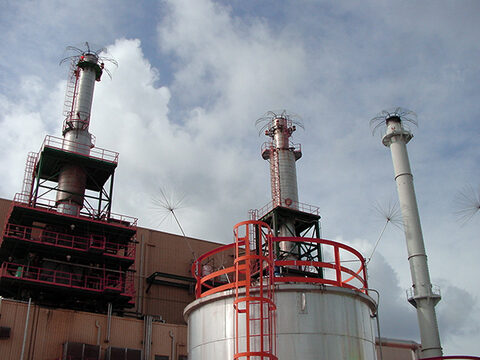 “Struck by lightning” is a metaphor for sudden, unpredictable disaster. A large thunderstorm can produce over 100 lightning flashes a minute, and even a modest storm cloud can generate the energy of a small nuclear power plant (a few hundred megawatts). Not all lightning strikes the ground, but that energy can be devastating when it does.
“Struck by lightning” is a metaphor for sudden, unpredictable disaster. A large thunderstorm can produce over 100 lightning flashes a minute, and even a modest storm cloud can generate the energy of a small nuclear power plant (a few hundred megawatts). Not all lightning strikes the ground, but that energy can be devastating when it does.
Problem:
None of the traditional lightning protection design systems are 100 percent effective, and all suffer from secondary effects related to the close proximity of the electrostatic and electromagnetic fields. They are dangerous to flammables, explosives, and electronics.
Solution
The Charge Transfer System (CTS) has proven effective in preventing lightning from striking protected areas, such as chemical plants, nuclear power plants, oil and petroleum facilities, offshore drilling rigs, and many others.
Lightning is the process of neutralizing the potential between the cloud base and the earth. Any strike prevention system must facilitate this process slowly and continuously. The Dissipation Array System (DAS) is one of the most common configurations of a Charge Transfer System (CTS) and has been designed to prevent a lightning strike to both the protected area and the array itself.
When eliminating the strike to the protected zone and the associated structure, the secondary effects of lightning are reduced if not completely eliminated. If a lightning strike could put a facility out of business, or even out of action for a few hours, consider whether the cost of preventing all future risks from lightning would not easily offset the cost of installing a CTS lightning elimination system. It is inexpensive insurance
Since 1971, LEC has developed specialized expertise in the field of lightning protection. While traditional lightning strike protection methods may be adequate for some installations, custom lightning protection design systems meet more exacting requirements when more complete protection is needed. Engineering an appropriate solution is more complex than simply putting up a lightning rod. Each site is evaluated for risk factors, geography, soil type, and many other parameters before implementing a protection plan.
For many reasons, there can be no “one size fits all” solution to lightning strikes. We are devoted to offering a truly effective lightning protection design system, providing the highest level of safety and effectiveness.
Connect with us for an advanced lightning protection design system and solution.